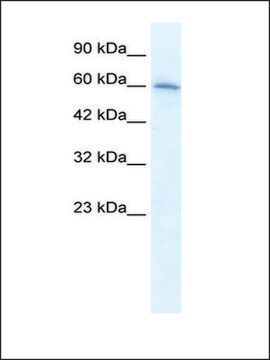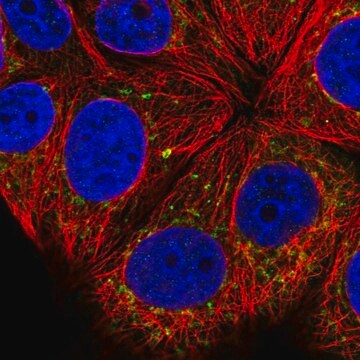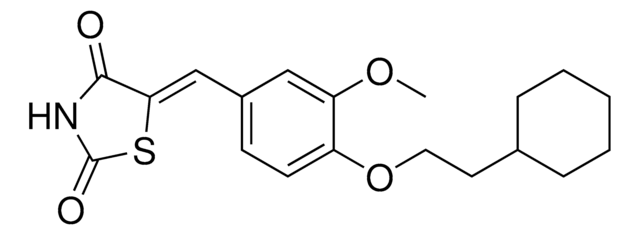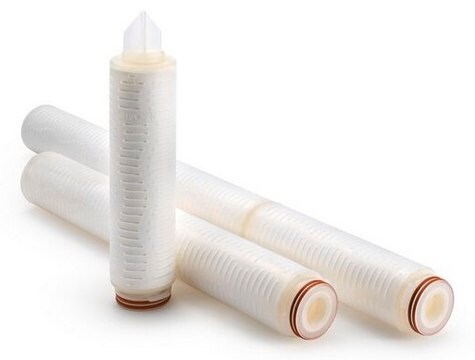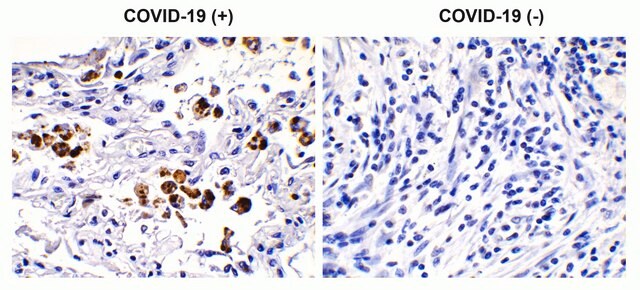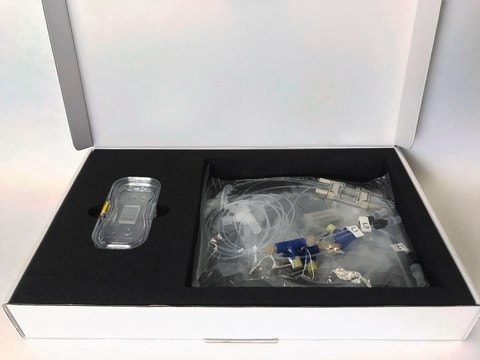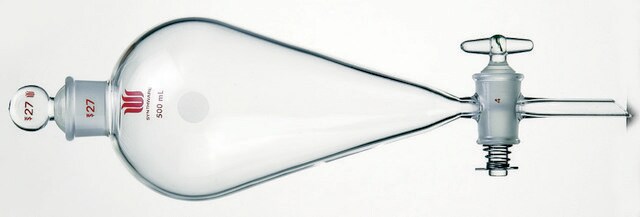MABE1946
Anti-LOXL2 Antibody, clone GS341
Synonym(s):
EC: 1.4.3.13, Lysyl oxidase homolog 2, Lysyl oxidase-like protein 2, Lysyl oxidase-related protein 2, Lysyl oxidase-related protein WS9-14
About This Item
Recommended Products
biological source
mouse
Quality Level
antibody form
purified antibody
antibody product type
primary antibodies
clone
GS341, monoclonal
mol wt
calculated mol wt 86.73 kDa
observed mol wt ~80 kDa
purified by
using protein G
species reactivity
mouse, human
packaging
antibody small pack of 100 μL
technique(s)
direct ELISA: suitable
inhibition assay: suitable
western blot: suitable
isotype
IgG1κ
epitope sequence
C-terminal half
Protein ID accession no.
UniProt accession no.
storage temp.
-10 to -25°C
Gene Information
human ... LOXL2(4017)
General description
Specificity
Immunogen
Application
Evaluated by Western Blotting with recombinant Human LOXL2.
Western Blotting Analysis: A 1:500 dilution of this antibody detected recombinant Human LOXL2.
Tested applications
Inhibition: A representative lot of this antibody inhibiter collagen cross-linking in human dermal fibroblasts (HDF).(Grossman, M., et al. (2016). Cancer Res. 76(14); 4249-58).
Western Blotting Analysis: A representative lot detected LOXL2 in Western Blotting applications (Grossman, M., et al. (2016). Cancer Res. 76(14); 4249-58).
ELISA Analysis: A representative lot detected LOXL2 in ELISA applications (Grossman, M., et al. (2016). Cancer Res. 76(14); 4249-58).
Electron Microscopy: A representative lot detected LOXL2 in Electron Microscopy applications (Grossman, M., et al. (2016). Cancer Res. 76(14); 4249-58).
Note: Actual optimal working dilutions must be determined by end user as specimens, and experimental conditions may vary with the end user.
Physical form
Storage and Stability
Other Notes
Disclaimer
Not finding the right product?
Try our Product Selector Tool.
Storage Class Code
13 - Non Combustible Solids
WGK
WGK 1
Flash Point(F)
Not applicable
Flash Point(C)
Not applicable
Certificates of Analysis (COA)
Search for Certificates of Analysis (COA) by entering the products Lot/Batch Number. Lot and Batch Numbers can be found on a product’s label following the words ‘Lot’ or ‘Batch’.
Already Own This Product?
Find documentation for the products that you have recently purchased in the Document Library.
Our team of scientists has experience in all areas of research including Life Science, Material Science, Chemical Synthesis, Chromatography, Analytical and many others.
Contact Technical Service